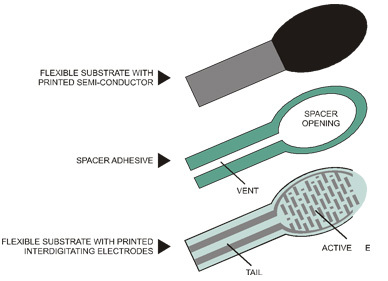Finding a using the best sensors for a project seems like it can be a bit challenging. In order to do so I think it very important to make sure you understand exactly what you want to accomplish. After all a sensor’s job it to detect and then act. But what are you detecting? Have you properly anticipated your projects needs?
For starters, my underwater device needs to be controlled. IR Sensors are used for remote controls and listeners. IR detectors are little microchips with a photocell that are tuned to listen to infrared light. They are almost always used for remote control detection – every TV and DVD player has one of these in the front to listen for the IR signal from the clicker. Inside the remote control is a matching IR LED, which emits IR pulses to tell the TV to turn on, off or change channels. IR light is not visible to the human eye, which means it takes a little more work to test a setup.
There are a lot of these available to choose from. Some are only a couple of bucks and work for a recommended distance of 10 to 80 cm. I don’t think that would be particularly helpful to me. In fact, even some of the more expensive ones don’t have a significantly wider range. The more I looked the more I realized that it might be very difficult to find one with the range I need. That is why I am now seriously looking at using a cable to control my sub.
I did find this helpful, albeit not very popular, basic tutorial on You Tube:
http:// www.youtube.com/watch?v=caMW1RRPOGE
(It think the kid who made it is pretty young)
I also found this great site with super clear examples of code and good solid videos
I particularly like the servo one below:
http://www.robotshop.com/blog/en/arduino-5-minute-tutorials-lesson-5-servo-motors-3636
I also came across Force Sensitive Sensors.
Changes in pressure and weight can be detected by using Force Sensitive sensors. They are basically a resistor that changes its resistive value (in ohms Ω) depending on how much it is pressed. Their design is very simple, they have a spacer between two layers, and they are very inexpensive.
They caught my eye because if I am to build an underwater device, incorporating a pressure sensitive sensor might be a smart way to create a fail safe. Let’s say the sub were to become untethered and lose power and sink to a potentially unsafe level. By incorporating one of these and giving it its own power supply and a pre-programmed response, you can ensure it will still surface so that it can be retrieved.
Sources:
http://learn.adafruit.com/force-sensitive-resistor-fsr





I like how you have been giving everyone insight into what kind of sensor you would want to use. I also appreciate the info you have been giving just in case anyone would need help in finding some direction with how they could incorporate a sensor into their project. I think I have found a couple ideas myself for my final project.
I am not totally sure, but if you have a sub that is going to go deep underwater for a certain amount of depth, I do not think being tethered would help your sub maneuver well. But you must also be careful about the force sensitive sensor you use. I say this cause the further down you delve into the ocean, the more pressure that is being applied to your bodies as well as the equipment of your sub. You have to make sure you know all the ins and outs of the specs of your force sensitive sensor before you make it your last resort. Even force sensitive sensors can break if applied with too much force.
http://www.youtube.com/watch?v=gtnNByljPq8
I found some videos about your topic, I hope it helps to give you more information about what you want to do for your projects.
THANKS!!